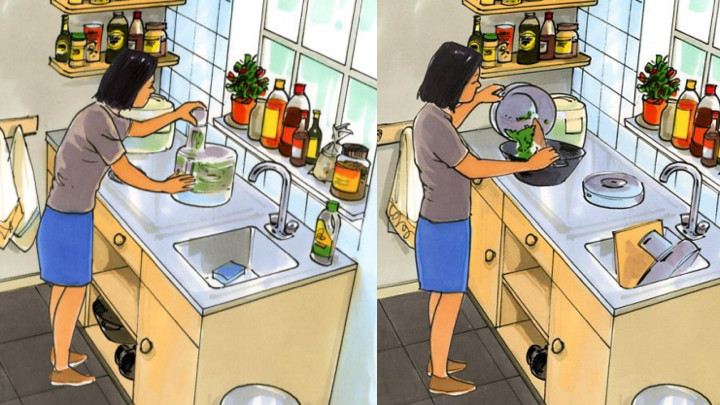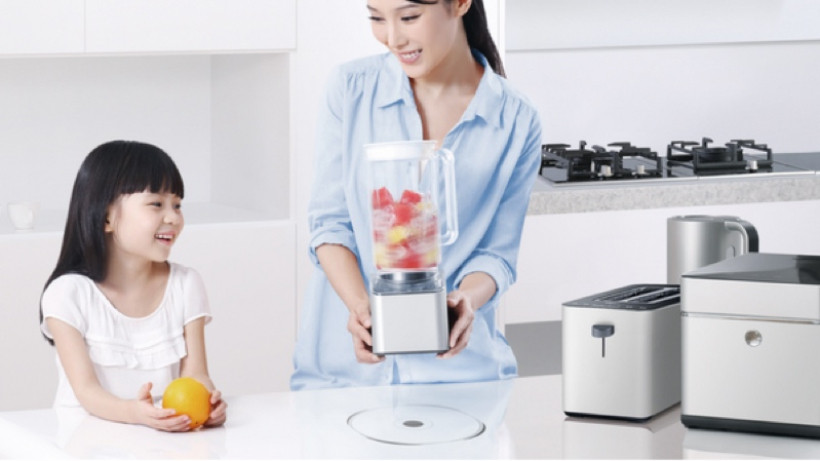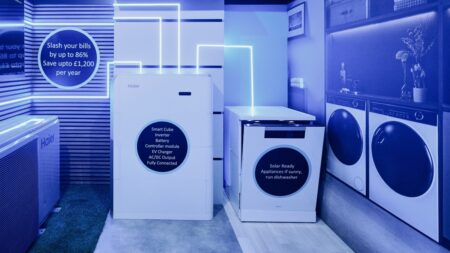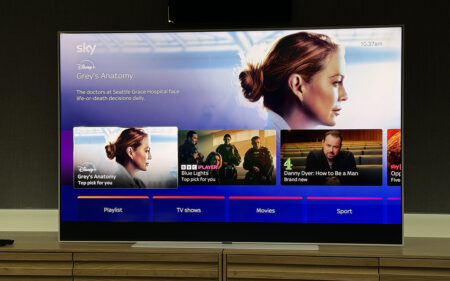The folks behind the Qi standard have their sights set on your toaster
Two speakers, a toaster, blender, food processor, kettle, washing machine and fridge – these are just some of the devices sucking up power in my kitchen as I type. For many, whether these devices are smart or not, it’s a similar story, with wires snaking across worktops and plug sockets teaming with hot-to-touch extenders.
However, as demonstrated by the Wireless Power Consortium (WPC) in London earlier this month, the cluttered kitchen may soon be a thing of the past. The group is on the cusp of creating a new standardisation, one that would help companies build and implement wireless appliances across the entire kitchen. So, instead of being handcuffed by power sockets, and trying to stretch your toaster across a metre of the counter just to save a cord being chopped, homeowners could soon be living in a wireless utopia.
Read this: The best smart kitchen devices
It all sounds a little too futuristic to be a near reality, doesn’t it? Ugly wires will no longer need to be routinely tucked away or on show, with the Consortium – the same one that developed the Qi standard used to wirelessly charge smartphones, ever-present in the likes of McDonald’s, coffee houses and trains throughout the globe – telling The Ambient that the kitchen standard could be finalised as early as a year from now, allowing manufacturers seeking its approval to be tested and hit the market.
“The question of ‘when’ is always a very difficult one to answer. We’re in charge of the standardisation process, so we can only really accurately talk about when we expect that to be finalised. But at the rate we’re going now, we could see products following its arrival to be developed in the second half of 2019,” Hans Kablau, a senior standardisation officer at Philips, and chair of the Wireless Power Consortium’s Kitchen Working Group (KWG), told us.

(Two use cases for wireless kitchen power: left, an ‘invisibly’ powered countertop; right, a coaster-like unit)
The arrival of a new standard would represent a mammoth step forward for a concept that has been dreamt up individually by the likes of Whirlpool, Ikea and BHS in recent years. But though these companies have all imagined what the finished version of the future kitchen will look like – complete with fitted dishwasher countertop units and smart displays layering over cupboards and windows – the initial developments will instead involve its most basic and essential need: bringing wireless power to smaller appliances.
Essential reading: What the smart home will look like in the future
Want to boil the kettle? Well, instead of having it plugged in and the switch flicked on, the wireless unit would already be on standby thanks to the magnetic power source sitting below the counter. By using a method of inductive power transfer, with a coil to draw power (up to 2,000 watts) and convert it into electricity or heat, devices such as toasters, rice cookers and pans, could all be powered safely and efficiently.
The above use case represents the end-goal, says Kablau, and would hide all the technology out of the way. However, with most kitchens not ready to truly integrate these units into a worktop, he also indicated that a smart, coaster-like device could be used to bridge the gap, as shown in the image above. This way, although the wireless power isn’t hidden, appliances could still be placed and used without cords.
Power to the kitchen – why now?
With this being so convenient, though, it’s easy to wonder why big companies haven’t already looked to create their own spin on wireless power and put their own devices on the market, isn’t it? Well, following the success of the WPC’s interoperable Qi standard, companies signed up to the Kitchen Working Group (such as Samsung, Panasonic, LG and more) are reluctant to dive in on their own, Kablau said.
With these companies, it’s a bit of a chicken and egg situation
“Consumers don’t want to be locked into brands – that’s what all these companies understand. Imagine if a company released a slow cooker that only worked with its own wireless power – it makes it a lot less appealing. Because of that, we intend to repeat the same recipe as we developed through Qi charging, and that means ensuring products are safe, certified and interoperable.
“With these companies, it’s a bit of a chicken and egg situation. That’s why it’s our job to help harmonise the entire ecosystem first, but that takes time. There’s a couple of companies for which this has been on the radar for quite a while, but without their co-operation the standard will go nowhere,” he continued.

(A blender and rice cooker sitting atop a sample worktop)
Another thing carried over from the Qi standard will be the WPC’s rigorous testing and approval process, with Kablau indicating that the wireless power units will be both safe and intuitive. Based on NFC technology, the Consortium’s KWG has developed a high-speed, short-range communication channel that it claims won’t be sensitive to interference or require pairing. In order to receive the WPC’s approval, though, brands will, of course, have to implement the technology to the fullest.
And the name and branding of the upcoming technology, if you’re wondering, hasn’t been decided yet by the Consortium. However, with this next classification seemingly just a short time away from kickstarting a wave of smarter kitchen appliances, we expect more details are on the way.
As always, CES in January could represent the ideal place for companies within the KWG to set their stall out and perhaps even demonstrate how their wares will adopt the new wireless standard and help de-clutter the kitchen. Either way, with these latest developments, it would appear a wireless kitchen is closer to reality than you might have expected – best start saving for more appliances to help take advantage of the extra room.





